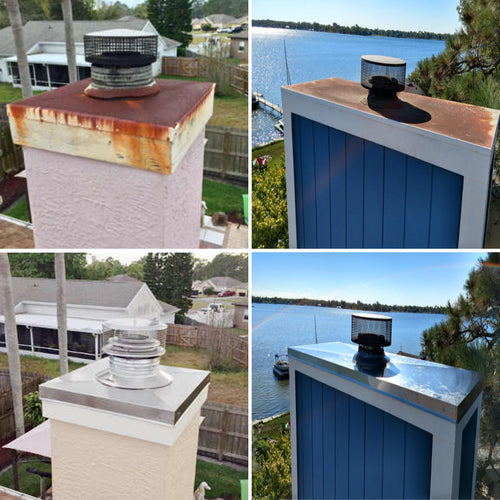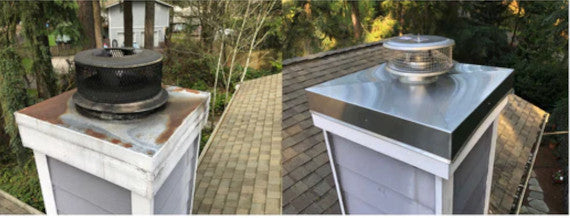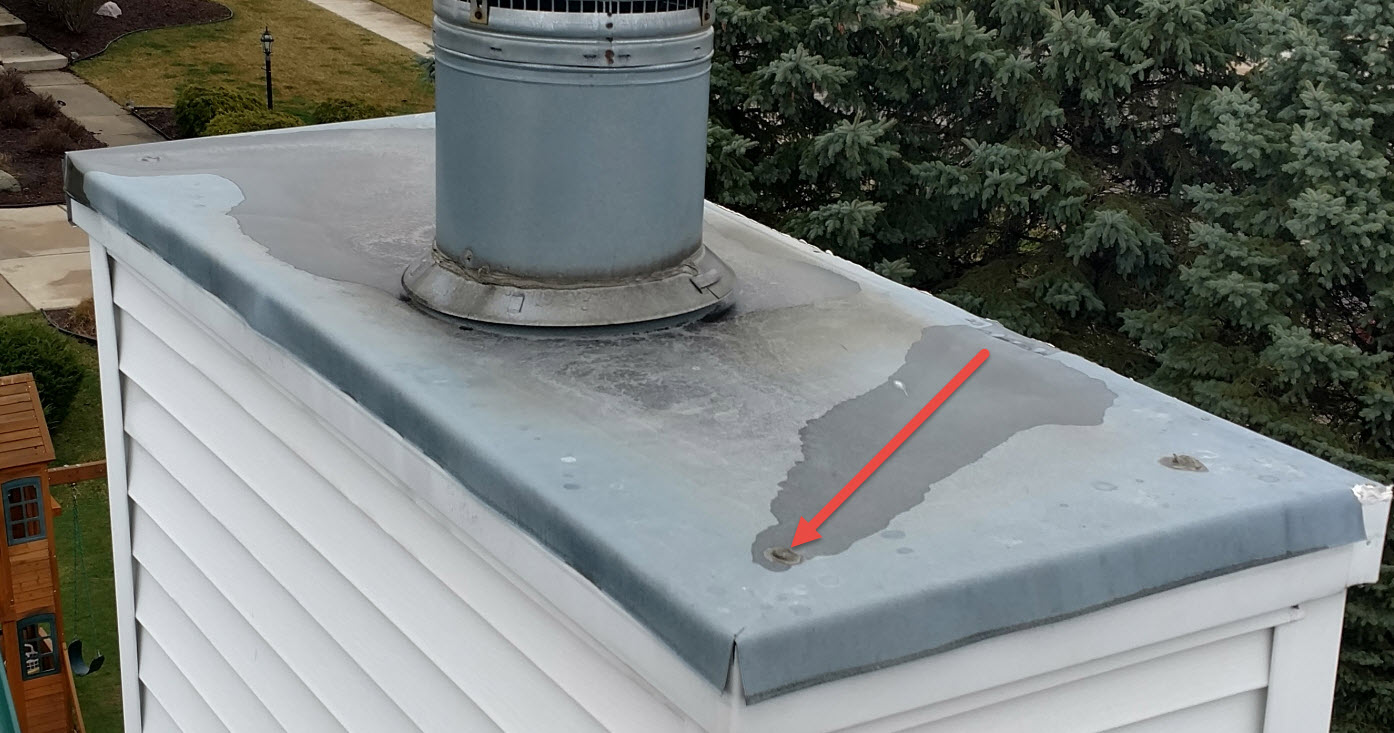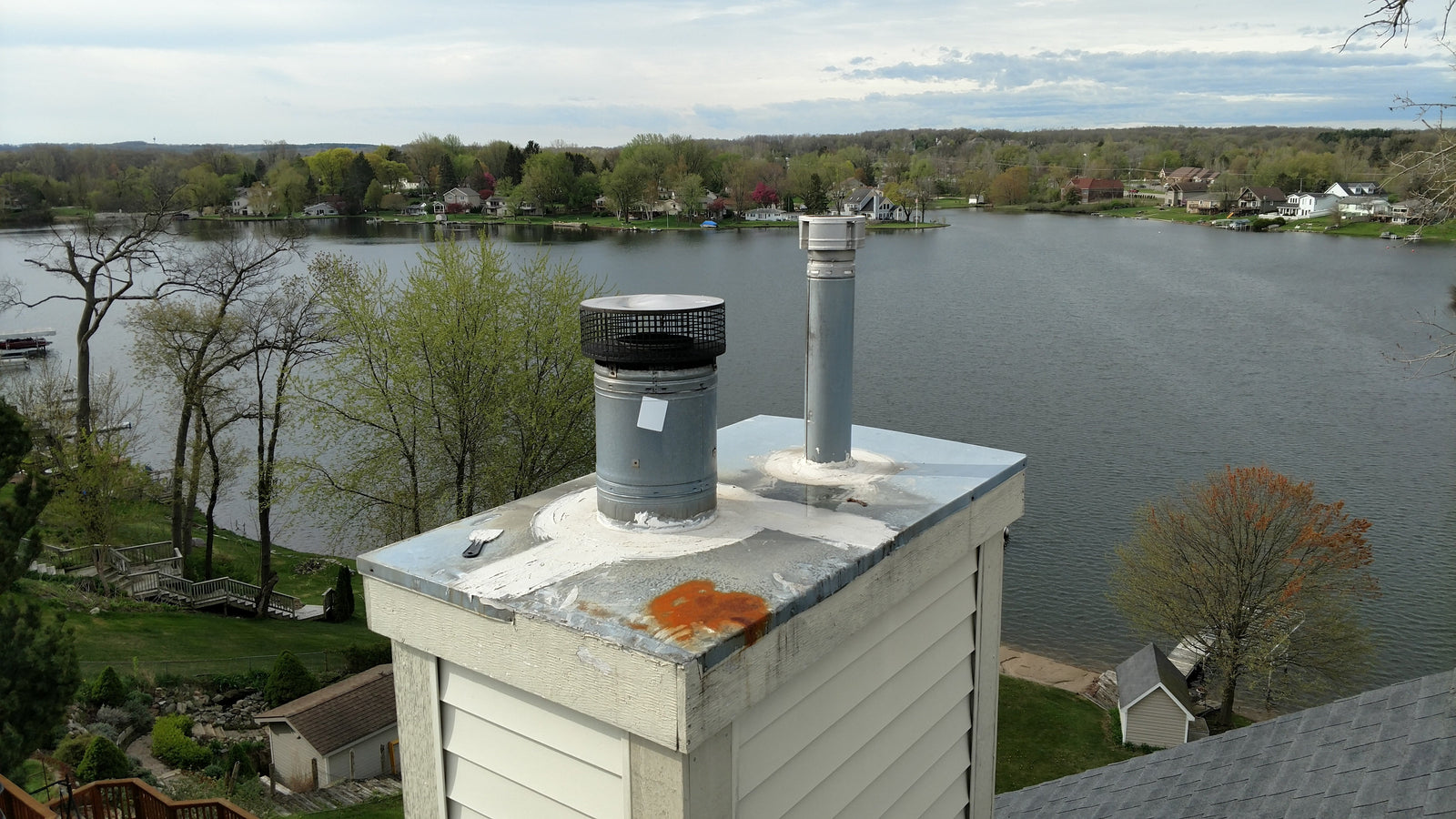Measuring Tricks for the Chase Cover Hole Size
July 19, 2023

Replacing a rusted chimney chase cover with a stainless steel chimney chase cover is a great way to stop or prevent leaky chimneys and unsightly rust stains. Replacing a chimney chase cover can, in most cases, be a very simple job. Taking the correct measurements for the cover is the most important part. However, taking the correct measurements does not have to be the most difficult part. Measuring for a custom stainless steel chimney chase cover can be easy by using these tricks of the trade!
The easiest measurement to take for a chimney chase cover is the length and the width of the chase. Make sure to measure both opposite sides of the chimney to ensure that one side is not longer than the other. For a good fit, always measure the chimney chase or brick chimney itself, not the old cover. Take into account if the chimney has a corbel or a step down, you may want to cover that to ensure it is water tight.
Hole Diameter Measuring Tricks of the Trade
The next measurement to obtain is the pipe diameter for the hole of the chase cover. Trying to hold the tape measure and eyeball the diameter is not a good way to measure a pipe. More times than not, that measurement will turn out to be too small. The best way to measure the diameter of the pipe is to remove the rain cap and measure the pipe diameter.

Another way to measure the hole diameter is to use two framing squares. You can use them like a caliber that measures gauge. Overlap two of the sides and pull them tight to the pipe. Then measure the gap between the squares as shown in this photo.
There's still one more trick for measuring the hole diameter for your new custom chase cover. Take the circumference measurement of the pipe. The circumference is the distance around the pipe. You can measure this by wrapping your tape measure around the pipe and where the tape measure starts to overlap itself is the circumference. Doing a little geometry will tell you the diameter. Diameter equals the circumference divided by Pi (Pi = 3.14). Example: circumference: 41" / 3.14 = Pipe Diameter 13.05".
Now we will need to measure for the hole location to determine where to cut the hole. This is done by holding a tape measure from each side of the chimney chase to the side of the hole. You will need to get 4 measurements for a standard rectangle or square chimney. We have it set up as you see below: Distance 1, 2, 3 and 4. To check your work, distance 1 and distance 3 plus the pipe diameter should equal the width (short side) of the cover. The same idea is for the length (long side); distance 2 and distance 4 plus the pipe diameter will equal the length of the cover. It is very important that you stand at the same spot while taking these measurements. You can find a helpful measuring video here on our blog.
Measuring Skirt Length and Collar Height

The last measurements to take are the skirt length and the height of the hole collar. Most times the skirt measurement is irrelevant and can be any length. But in some cases the skirt needs to cover a certain trim board or crown height. For masonry chimneys, it is very important to measure the vertical drop of the chimney crown so that the skirt will over hang the first course of brick in order to set the masonry anchors.
If it appears that your flue pipe or clay tile does not come through the top of the chimney very much, you must measure for the collar height. You need to make sure the collar height is short enough to allow for the the storm collar to be set to a point where it will not interfere with the rain cap. Collar height is also important to consider when there are two flue pipes close together and an offset in the storm collars may be needed so they do not interfere with each other.
This may seem like a lot to consider, however it is pretty simple to measure for a custom stainless steel chimney chase cover. We have measuring guides you can fill out while you are on the roof that mark all the measurements needed for your chase cover order. Just make sure to remember the old saying, Measure Twice And Cut Once.
DIY Center
(AKA ‘The Rockford Files’)
From video tutorials to product walkthroughs, we have a variety of DIY resources just for you! Click the button below to view our entire library.

Our 316Ti flexible chimney liner and chimney liner components have passed the rigorous testing at the Underwriters Laboratories with best in class status and are UL Listed. So if you are looking for UL listed chimney liner sold directly to homeowners, then look no further than Rockford Chimney







